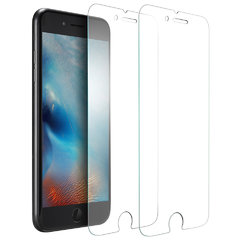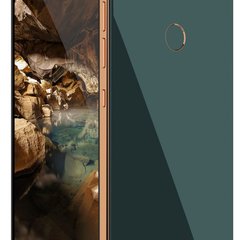Mobile Networks: 1G, 2G, 3G, 4G

1G
Older generations can surely remember their first voice call. The technology used in these calls was the first generation (1G) of wireless telephone technology. 1G is analogue telecommunication standard, and it was able to transfer only your voice. It first appeared in Japan in 1979. The first generation of mobile networks used analogue signal and it had a magnificent coverage. One could connect to a cell tower as far as signal could be transmitted. However, 1G had a few problems, as well. Here's one - just like your UHF radio, anyone with a radio scanner capable of receiving and transmitting on the 800MHz band could drop in your call. But, people were willing to accept this risk as long as they can make wireless calls. At its peak, 1G network had around 2 million subscribers. [caption id="attachment_8312" align="aligncenter" width="300"] Mobile devices that used 1G mobile network[/caption]2G
In 1991, we got 2G network. This network uses digital signal and GSM standard. It first appeared in Finland. Besides making voice calls, with 2G network we could: 1. send text messages. Although the capacity of the text was much lower than we have it now, SMS was alive. send MMS messages. [caption id="attachment_8313" align="aligncenter" width="300"] SMS, finally![/caption] 2. 2G network is still used in some undeveloped countries. The size of SMS and MMS messages and speed of the data transmission were vastly improved in the late 90’s. Finally, in 1997 we got so called 2.5G network. The biggest improvement that2.5G brought wasGPRS. It is needless to say that this was a colossal advancement, especially when people started checking their emails more often. For the first time, the world got GSM with “always on” data service. There was no longer dial-up silliness as long as you had a postpaid account with your mobile operator.3G
We are all familiar with this type of network. It first appeared in 2001 in Europe, Japan, and China. The third generation of a mobile network brought an enormous revolution in data transfer. The speed of data transmission on a 3G network ranges between 384 Kbps to 2 Mbps. Such a massive data transfer enables video calling, file transmission, internet surfing, watching TV online, viewing high-definition videos, playing games and much more. With 3G network, our lives have become much comfier but also faster and more dynamic. [caption id="attachment_8314" align="aligncenter" width="300"] 3G mobile network seemed like a Superman comparing to it's predecesors.[/caption]4G
If we had to describe 4G in only one word, it would be SPEED. 4G is five times faster than 3G network, and, in theory, it can provide speeds of up to 100Mbps. This network offers faster and more reliable broadband internet service for devices like smartphone, tablets and laptops. 4G arrived in 2012. A synonym for 4G is LTE (it stands for Long Term Evolution) and it is a type of 4G technology. The question you might ask while reading this blog post is what phones support real 4G LTE? The answer is all models released from 2013, and upwards. You will recognize them by LTE mark that they usually have. [caption id="attachment_8315" align="aligncenter" width="300"] 4G LTE logo[/caption]5G
Have you already heard of 5G? It is going to be the next “wow” mobile network generation, not just a minor upgrade from 4G LTE. According to online rumours, the fifth generation of mobile networks is the next major phase of communication development, and it will be going beyond the standards of 4G. Data transfer rates might go up to several tens of megabits per second. 5G will probably be one of the biggest upgrades of mobile networks in the past few decades. We are hoping to see latency reduction (latency is the amount of time that it takes to send data from one device to another) and improved signal strength with better network coverage. We expect it to arrive early 2020’s, because, so far a new generation of the mobile network appear in approximately every ten years. [caption id="attachment_8316" align="aligncenter" width="300"] 5G mobile network is the future[/caption]At the end
We’ve been using wireless communications since the early 80's. During past 35 years, the way we interact and use our mobile phones has developed in many ways. We have started with simple mobile voice calls and ended up with HD video streaming on our phones. And we can't wait to see what exactly is 5G going to bring us. The evolution of mobile networks is probably limitless, and we can’t even imagine what are we going to be able to do with some upcoming generations. Images from: PCMag, IBN Live, Google Play, TVM.Las categorías
Futuristic Future Review Market Compare models Coming Soon General New Technologies News Actual Alcatel Tips Huawei Gorilla glass Comparation Smartwatch Apps Software Apple Blackberry HTC Motorola Nokia Sony LG Samsung Android Sony Ericsson Interesting Little school Inovations Microsoft Symbian iOS Acer Google Games Popular
Entradas populares
Etiquetas
New model Android Samsung nokia apple iPhone review Inovations HTC Blackberry iOS Google LG motorola Operative system research sony Galaxy update market share Samsung Galaxy S8 galaxy s5 Ice Cream Sandwich LG G3 price Sony Ericsson AMOLED LG G3 Future vision Gingerbread definition Tablet camera Huawei game iPhone 5S LG G3 screen
Buscar
Busca y ve las últimas publicaciones del blog.










